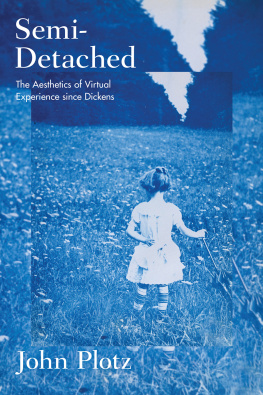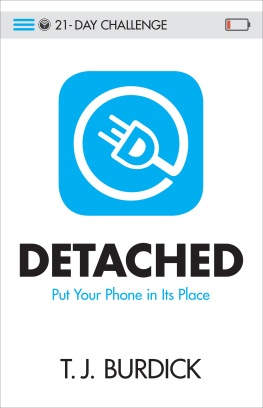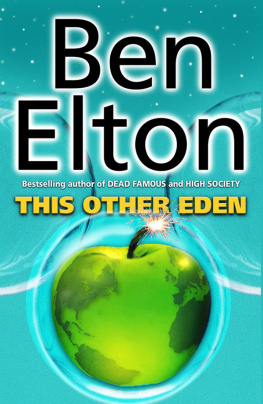Plotz - Semi-Detached
Here you can read online Plotz - Semi-Detached full text of the book (entire story) in english for free. Download pdf and epub, get meaning, cover and reviews about this ebook. publisher: Princeton University Press, genre: Art. Description of the work, (preface) as well as reviews are available. Best literature library LitArk.com created for fans of good reading and offers a wide selection of genres:
Romance novel
Science fiction
Adventure
Detective
Science
History
Home and family
Prose
Art
Politics
Computer
Non-fiction
Religion
Business
Children
Humor
Choose a favorite category and find really read worthwhile books. Enjoy immersion in the world of imagination, feel the emotions of the characters or learn something new for yourself, make an fascinating discovery.
Semi-Detached: summary, description and annotation
We offer to read an annotation, description, summary or preface (depends on what the author of the book "Semi-Detached" wrote himself). If you haven't found the necessary information about the book — write in the comments, we will try to find it.
Semi-Detached — read online for free the complete book (whole text) full work
Below is the text of the book, divided by pages. System saving the place of the last page read, allows you to conveniently read the book "Semi-Detached" online for free, without having to search again every time where you left off. Put a bookmark, and you can go to the page where you finished reading at any time.
Font size:
Interval:
Bookmark:

Semi-Detached
Semi-Detached | THE AESTHETICS OF VIRTUAL EXPERIENCE SINCE DICKENS |
John Plotz
Princeton University Press
Princeton and Oxford
Copyright 2018 by Princeton University Press
Published by Princeton University Press, 41 William Street, Princeton,
New Jersey 08540
In the United Kingdom: Princeton University Press, 6 Oxford Street,
Woodstock, Oxfordshire OX20 1TR
press.princeton.edu
Cover image: Robert de Montesquiou, Portrait de Aude de Montesquiou
(cyanotype), c. 1899. Bibliothque nationale de France, Dpartement
des Manuscrits, N. a. fr. 15039, fol. 121.
All Rights Reserved
ISBN 978-0-691-15946-1
Library of Congress Control Number: 2016960847
British Library Cataloging-in-Publication Data is available
This book has been composed in Stempel Garamond LT Std
Printed on acid-free paper.
Printed in the United States of America
10 9 8 7 6 5 4 3 2 1
To Lenny and Daria | detached or attached near or far our joy forever |
Contents
Visual Interlude II / This New-Old Industry:
William Morriss Kelmscott Press 153
Overtones and Empty Rooms: Willa Cathers
Layers 196
Visual Interlude III / The Great Stone Face: Buster
Keaton, Semi-Detached 215
Illustrations
Acknowledgments
These thanks begin with a wince at the thought of omitting many people whose kindness and acumen palpably shape this book (Think where mans glory most begins and ends / And say my glory was I had such friends). No choice but to press on, regardless: Steve Biel, Alex Ross, and Phil Joseph (who got caught in a hailstorm with me on the way to Red Cloud, Nebraska) helped me understand Cather. The chapter on short fiction would be inconceivable without Penny Fieldings collegiality, counsel, and camaraderie, and Jonathan Grossmans Dickensian wit and wisdom. My ideas about Mill and Victorian liberalism owe much to Elaine Hadley, Rachel Ablow, Deborah Cohen, Elaine Freedgood, and Mary Jean Corbett. For tutelage and counsel on all things Victorian, I thank Elaine Scarry, Philip Fisher, Anna Henchman, Deb Gettelman, Nick Dames, Rae Greiner, Ian Duncan, Catherine Gallagher, and the two splendid Victorianist groups in Boston, generously overseen by Martha Vicinus, Laura Green, and Kelly Hager. Jed Esty and Sarah Cole shared their thoughts on Wells, science fiction, and much more; Andrew Miller and Sharon Marcus did the same when it came to Buster Keaton. In correspondence and highly delightful conversation on art history topics ranging from Millais to Alma-Tadema to William Morris, Beth Helsinger, Tim Barringer, Jennifer Roberts, Kate Flint, and Pamela Fletcher have been kindness personified. For research on Morris and in other archival forays, I am particularly indebted to Elizabeth Miller and Florence Boos, and to Anne Woodrum and Sarah Shoemaker at Brandeis, and the thoughtful staff at Harvards Widener and Houghton Libraries. At Princeton, Anne Savarese and her editorial team were terrific.
Then I come to those whose fingerprints are simply all over the book: old friends like Vanessa Smith, Ivan Kreilkamp, Daniel Itzkovitz, and Sean McCann; new ones like Sanjay Krishnan, Eugene Sheppard, and the Time-Lapse groupGina Turrigiano, Elizabeth Ferry, Tory Fair, Sharon Grimberg, Rahul Mehrotra, and Erik Noyes. Friends outside the academy who long ago won my love also earned my thanks for tough questions and unquestioning support during the long years of writing: Liberty Aldrich, Alex Star, Robert Glick. Finally, this book is entirely permeated by the generosity, wisdom, and patience of the Maple Ave. gangYoon Lee, Leah Price, Amanda Claybaugh, and Deidre Lynch. They richly deserve this books dedicationbut will forgive me when they see who replaced them.
My grandmothers, Helen Plotz and Helen Abrams, are gone now but unforgotten. It makes me smile to think of my brother David, his wife Hanna, their Noa, Jacob, and Gideon. My parents Paul Plotz and Judith Abrams Plotz are a cold refreshing spring; what a joy that their grandchildren can drink from the same source David and I did growing up. Lisa Soltani: same as last time, nothing more to say and never less, on this earth or in it.
Semi-Detached draws on various earlier pieces, substantially reworked and revised. Portions of Julian Murphet, Helen Groth, and Penelope Hone (Edinburgh University Press, 2017). Portions of the conclusion are adapted from This Book is 119 Years Overdue Slate (November 17, 2011). I gratefully acknowledge generous support from the Guggenheim Foundation and the Radcliffe Institute for Advanced Study, as well as a Senior Faculty Research Leave from Brandeis University. Thanks are also due to the National Humanities Center for funding, and to my generous colleague Maurie Samuels for co-organizing, The Virtual Nineteenth Century, a 2011 conference about semi-detachment. Portions of this work were presented at Victoria University (NZ), University of Otago, Wesleyan, Yale, Durham University, Chicago, University of British Columbia, Harvard, University of Sydney, University of Edinburgh, University of Sussex, Stanford, SUNY Buffalo, Indiana University, University of Alabama, Brandeis, Boston College, Tufts, SUNY Binghamton, University of Wisconsin, University of Connecticut, Dickens Universe, and Notre Dame. I am grateful to audiences and colleagues there for their questions, comments, and subsequent correspondence.
Semi-Detached
Introduction: Through Bright Glass
When you half lose yourself in a work of art, what happens to the half left behind? The critical vocabulary to describe that sensation is lacking, but it is a familiar feeling, nonetheless. When most carried away, audiences of even the most compelling artwork remain somewhat aware of their actual situation. Ideas about this kind of semi-detachment play a crucial and generally unrecognized role in shaping a wide range of nineteenth- and twentieth-century fiction. In such works, the crux of an aesthetic experience is imagined, or depicted, or understood as residing neither in complete absorption in an artwork nor in critical detachment from it, but in the odd fact of both states existing simultaneously.
In George Eliots The Mill on the Floss, for instance, the first chapter moves suddenly from an account of the young Maggie Tulliver at play to a description of the really benumbed arms of the narrator who has been watching her:
It is time the little playfellow went in, I think; and there is a very bright fire to tempt her: the red light shines out under the deepening gray of the sky. It is time, too, for me to leave off resting my arms on the cold stone of this bridge....
Ah, my arms are really benumbed. I have been pressing my elbows on the arms of my chair, and dreaming that I was standing on the bridge in front of Dorlcote Mill, as it looked one February afternoon many years ago.
Eliots doubled elbow-rest (bridge and chair-arm both) offers a way to think about the reading of the novel itself: not only am I here reading, I am also there watching. The narrator turns into a simulacrum of the reader, whose dream-like entry into Maggies world is bodied forth in the narrators ellipsis-marked discovery that his or her arms have been pressing onto bridge and armchair simultaneously. That dual experience of being both at home in ones own study and at the same time immersed in an invented world is intimately linked to Eliots sense that novels themselves may become testing grounds for universal laws of ethics and of sociability. Novels help Eliot to explore how little you grasp of the other minds at work around you and to chart some of the ways in which their own wavering, flickering attention misunderstands you in just the same degree that you misunderstand them.
Next pageFont size:
Interval:
Bookmark:
Similar books «Semi-Detached»
Look at similar books to Semi-Detached. We have selected literature similar in name and meaning in the hope of providing readers with more options to find new, interesting, not yet read works.
Discussion, reviews of the book Semi-Detached and just readers' own opinions. Leave your comments, write what you think about the work, its meaning or the main characters. Specify what exactly you liked and what you didn't like, and why you think so.













